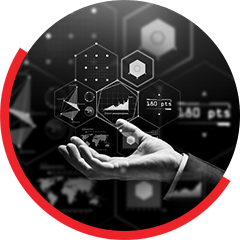Migration from older versions of AX to the latest Dynamics 365 to the cloud is not a typical “Upgrade” project and comes with its challenges. Read more to understand the top challenges and the expert recommendation for a successful Modernization to Dynamics 365
Why Modernization?
Established companies often struggle to become more dynamic. Modernization helps transition into the digital age. It helps deal the digital age mandates like:
- Digital Transformation in Customer Experience, Operational Process and Business Model
- Business and IT Integration
- Unified Data and Processes
- Analytics Capabilities
Modernization gives Agility to organizations to renew themselves, adapt, change quickly, and succeed in a, ambiguous, turbulent environment. Modernization helps the organizations expand into new markets easily, support new locations, geographies, and industries with minimal IT effort.
Challenges of older versions such as AX 2009, AX 2012 R1, R2, R3
Customers with older on-premises AX versions have challenges which affect business much more than the end-of-life support. These challenges need to be addressed as part of the transition planning
- A lot of functional gaps or manual processes
- New capabilities that align with Industry practices
- Flexibility to easily expand operations in other areas / geos / subsidiaries
- Complicated Customizations that are like Pandora boxes
- Making it easy to unearth business insights from the data available
- Simplify the many Integrations, ISV solutions and complex IT systems
How to define your organizations readiness to modernize?
Disruption and cost are generally the biggest worries while executing modernization programs and for a successful migration, we recommend focusing on planning of the migration that will best suit your organization.
Step 1 is to define or determine the best migration path for your organization. While one size does not fit all, migration has been simplified today with tools and automation making direct upgrades a reality. Understand what suits you the best based on your current landscape and usage
Make sure that the migration plan defined has the plan in place to address the challenges mentioned in the section above.
How to plan the migration that is best for your organization
Determine a migration plan that will help your organization:
- Validate and re-validate the business process that are required for your organization to succeeded in the new digital norm
- Leverage more standard functionality that are aligned to today’s Industry standard
- Understand customizations done and identify those that are still relevant to business to ensure that you adopt more standard
Is a direct migration from your older version possible?
Understand if direct migration from older version is useful. Direct migrations mean using a tool to reuse current investments of your on-premise systems to reduce the overall effort needed to migrate to Dynamics 365 and its business applications
A direct migration would mean saving of effort and hence costs as and hence the ability to re-use the current systems should be considered an option. This way, you can leverage the investment of years of business knowledge, processes that gives your organization the competitive edge today instead of throwing them over for lack of investigation into the tools and automation available today.
A migration assessment is the first step to help you understand the value of and steps to cloud migration
How is Sonata’s Assessment Unique and can help you?
Sonata’s unique approach and purpose-built tools simplify and automate the migration plan to the cloud and Dynamics 365 faster, with significant cost and effort savings!
The main objective of the Sonata’s assessment will be to define the business transformation vision, the business transformation needs and then the migration strategy.

These will help you
- Identify business objectives and tie these into the functionality of Dynamics 365
- Understand the benefits of moving from an older on-premises solution to the cloud
- Determine ways to optimize the migration process with a focus on reducing effort and costs
- Detail all the next steps and risks to mitigate with high level effort and schedule
|
|
||
|
|
|
|
For a deeper understanding connect with our Dynamics Team here and learn more about how to accelerate your modernization journey

